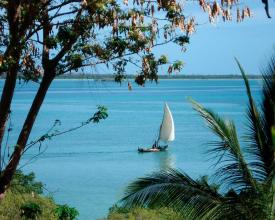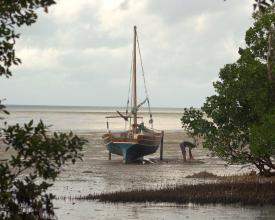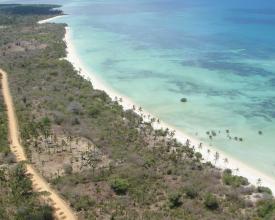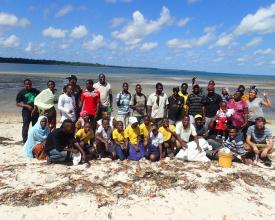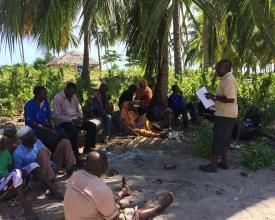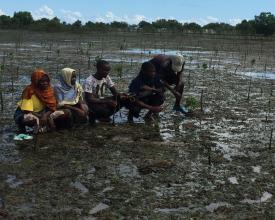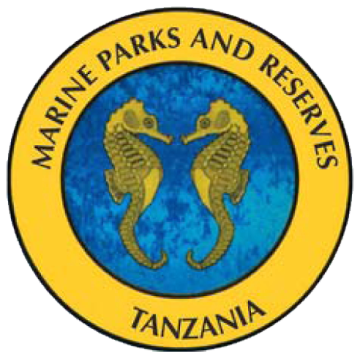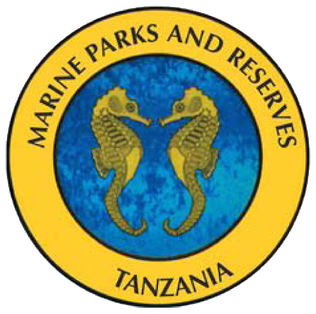
Le parc marin de l'île Mafia : une réussite en matière de gouvernance inclusive
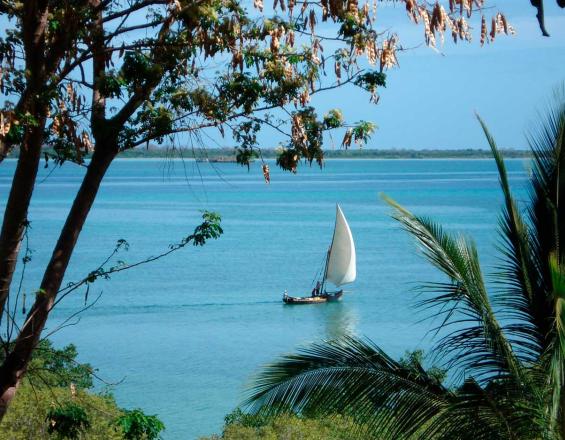
Le parc marin de l'île Mafia (MIMP) a été créé en 1995. C'était le premier de ce type en Tanzanie continentale. La communauté locale vit à l'intérieur du parc et ses moyens de subsistance dépendent principalement des ressources marines du parc. Avant la création du parc, elle observait une pression croissante sur ses ressources halieutiques en raison de l'utilisation par les pêcheurs migrants de méthodes illégales de pêche à l'explosif et de pêche à l'aide de filets traînants. La communauté et le gouvernement ont compris la nécessité d'atténuer ce déclin et ont pris des mesures. Le parc a adopté très tôt un système de gestion collaborative et de gouvernance inclusive, et a donné la priorité aux avantages socio-économiques pour les habitants de la région. Le MIMP prospère, étant un lieu vierge pour le sanctuaire des poissons et un haut lieu du tourisme.
Contexte
Défis à relever
Au début, les communautés villageoises avaient une attitude négative à l'égard du parc, et le niveau de compréhension de la conservation des ressources naturelles était faible. Les habitants des îlots n'avaient pas accès aux services sociaux, tels que les dispensaires ou l'approvisionnement en eau potable. Un grand nombre d'abandons scolaires a été constaté.
Il y avait également quelques défis environnementaux, tels que :
- L'augmentation du nombre de pêcheurs migrants utilisant des pratiques de pêche destructrices et illégales, telles que la pêche à l'explosif et la pêche à l'épuisette.
- l'exploitation illégale du corail
- L'exploitation excessive et non réglementée de la mangrove pour la fabrication de boutres (bateaux de pêche) et de poteaux pour la construction.
Emplacement
Traiter
Résumé du processus
La gouvernance inclusive et le régime de gestion participative du MIMP ont permis d'établir une base solide pour l'engagement des communautés dans la conservation et la restauration des écosystèmes, ainsi qu'une relation de confiance entre les différents organes de gestion et les communautés villageoises. Le parc offre des avantages tangibles à ses habitants, qui participent activement à la prise de décision et aux activités de conservation. L'éducation à l'environnement, la sensibilisation et la formation et le développement de moyens de subsistance alternatifs améliorent la compréhension et l'intérêt pour la gestion des ressources naturelles.
Blocs de construction
Gouvernance inclusive et gestion participative
Le MIMP est géré par l'Unité des parcs et réserves marins (MPRU), qui est le bureau gouvernemental chargé des zones marines protégées, ainsi que par les bureaux de liaison des villages, qui ont été mis en place dans chacun des 11 villages du parc.
L'approche de gestion participative appliquée par les deux parties a jeté des bases solides pour que les membres des communautés participent à la prise de décision. Différentes méthodes ont été appliquées pour favoriser une large participation, telles que des réunions avec les VLO et d'autres parties prenantes, des discussions de groupe avec différents groupes d'utilisateurs de ressources, des entretiens spéciaux et des discussions avec des personnes clés et influentes.
Facteurs favorables
- Un bon leadership de la part du personnel de la MPRU et des représentants des villages.
- Transparence et partage cohérent des informations pour lutter contre la pêche illégale.
- Éducation et sensibilisation à l'environnement.
- Confiance établie avec les membres des communautés.
- Prise en compte des besoins des communautés par les organes de gestion.
Leçon apprise
- Les communautés ont besoin de voir des impacts et des actions visibles. Une fois que nous aurons répondu à leurs besoins, la confiance s'installera. À partir de là, tout est possible.
- La plupart des communautés comprennent l'action du parc et s'engagent avec la MPRU dans des activités de sensibilisation et de gestion. Les membres des communautés informent et sensibilisent leurs pairs.
- La confiance va dans les deux sens. La MPRU doit également faire confiance aux membres de la communauté (par exemple, en délivrant des permis pour l'utilisation du bois de la mangrove).
Équilibrer les besoins des habitants de l'île de Mafia et les impératifs de conservation
Le MIMP a été créé principalement pour préserver la biodiversité et mettre fin aux pratiques de pêche très destructrices utilisées par les pêcheurs migrants. Il était également dans l'intérêt des pêcheurs locaux. Toutefois, il était essentiel de tenir compte des besoins des habitants et de leur dépendance à l'égard des ressources naturelles. Ainsi, d'une part, le personnel de la MPRU a assuré la conservation de l'environnement et la sensibilisation à l'utilisation et à la gestion des ressources et, d'autre part, il a amélioré les infrastructures pour la scolarisation, la santé et l'approvisionnement en eau. La loi est également appliquée aux coupables et aux membres de la communauté réticents à suivre les règles. En retour, les villageois qui les respectent sont encouragés et félicités.
Facteurs favorables
- Soutien aux frais de scolarité des enfants pour qu'ils continuent à aller à l'école.
- Infrastructures au niveau du village, telles que dispensaires, salles de classe, approvisionnement en eau.
- Visites d'échange organisées pour les habitants du MIMP afin de découvrir des exemples de réussite, comme les femmes cultivatrices d'algues à Zanzibar, dans le cadre d'activités de conservation au Mozambique.
- Formation à la gestion communautaire des ressources naturelles dispensée aux hommes et aux femmes de la communauté par des professeurs d'université désignés.
- Mécanismes de partage des bénéfices de la conservation (collecte totale des droits d'entrée des touristes).
Leçon apprise
- Une fois que les communautés voient les avantages offerts par le parc, elles s'engagent et participent pleinement. Le mécanisme de partage des bénéfices est la clé du succès.
- Les gens voient que la conservation apporte des avantages en termes de ressources, comme de bonnes prises de poissons. Elle a attiré des pêcheurs migrants. Cependant, les pêcheurs locaux s'engagent et signalent volontairement les cas d'illégalité, ou les pêcheurs migrants sans permis. Chaque village décide du nombre de migrants qu'il peut accueillir.
- Une fois que les étudiants ont terminé leur scolarité, grâce aux bourses et au parrainage, ils reviennent et travaillent en tant que chefs de village, contribuant ainsi à l'effort de conservation, de même que leurs parents qui voient les avantages, s'engagent également dans des activités de conservation.
Mécanisme de partage des bénéfices et moyens de subsistance alternatifs
Les revenus du MIMP provenant du tourisme et d'autres activités sont utilisés pour soutenir les villageois de différentes manières, notamment pour
- Payer les frais de scolarité.
- Construire des infrastructures au niveau du village.
- Organiser des échanges d'apprentissage, des visites de sites.
- Développement de moyens de subsistance alternatifs, tels que l'apiculture, la culture d'algues, la construction de boutres .
Un pourcentage de 20 % des recettes nettes est alloué au conseil des VLC pour soutenir des actions dans chaque village.
Facteurs favorables
- Transparence et responsabilité.
- Confiance.
- Planification et gestion collaboratives : les communautés peuvent choisir les infrastructures dont elles ont besoin.
Leçon apprise
- Plus nous sommes transparents, plus nous offrons des avantages aux communautés, plus elles s'engagent dans des activités de conservation.
Impacts
Les communautés se sont approprié les ressources côtières et marines. Elles participent donc activement aux activités suivantes
- la surveillance des ressources marines : récifs coralliens, prises de poissons, plages
- les patrouilles chargées de faire respecter la loi
- la sensibilisation aux questions de conservation par le biais de programmes d'éducation à l'environnement
L'égalité des sexes est bien intégrée dans les activités de conservation grâce à une répartition égale des ressources marines et des avantages sociaux entre les communautés, à l'inclusion et à la gestion participative.
Impacts sur l'environnement :
- Restauration de la mangrove dans les zones décimées
- Diminution de 98 % des pratiques de pêche illégales
- Augmentation des prises de poissons et des ressources halieutiques en général, tant pour les pêcheurs artisanaux que pour les pêcheurs commerciaux.
Avantages sociaux :
- 670 garçons et filles issus de familles pauvres ont bénéficié d'une aide pour payer leurs frais de scolarité.
- Infrastructures au niveau du village : 4 dispensaires (4 000 personnes en bénéficient, y compris un centre de santé avec des salles de maternité), des salles de classe (600-800 étudiants en bénéficient), plus de 7 systèmes d'approvisionnement en eau (4 000 personnes en bénéficient).
Bénéficiaires
- Pêcheurs de poulpes
- Producteurs d'algues
- Pêcheurs artisanaux
- Coupeurs de perches
- Mineurs de corail
- Poissonniers
- Hôteliers
- Autorités locales
- Guides touristiques et opérateurs
- Communauté locale à l'intérieur du parc
Histoire
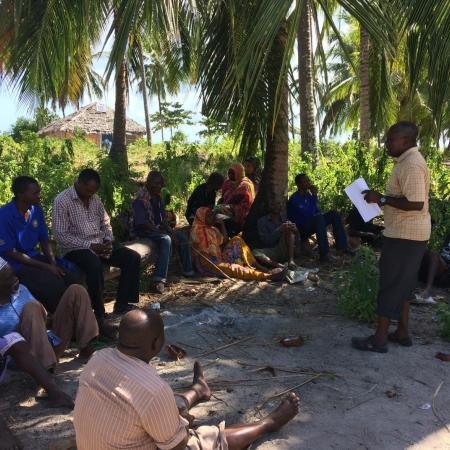
Le parc marin de l'île Mafia est un sanctuaire pour les poissons, ce qui en fait un lieu de pêche productif et une destination touristique très prisée. De nombreuses personnes vivant à l'intérieur et à proximité du parc dépendent de ces ressources marines pour leur subsistance.
Cependant, en raison de la pression accrue exercée par les pêcheurs migrants qui pratiquent la pêche illégale à l'explosif et au filet, les ressources commencent à s'épuiser et font souffrir de nombreuses personnes. Une solution immédiate s'imposait donc. La communauté et le gouvernement ont pris des mesures ensemble.
Le MIMP a alors été créé avec pour objectif immédiat la conservation de la biodiversité. L'objectif premier du parc était de lutter contre la pêche illégale à la dynamite, dont 98 % a été éliminée, et de diffuser l'éducation à l'environnement afin de sensibiliser les populations aux questions de conservation. En conséquence, la communauté a cherché à collaborer avec le parc après avoir compris les objectifs du parc, pour et contre.
Au fur et à mesure de ses efforts, le parc a continué à bénéficier à la communauté grâce à l'établissement de bureaux du Comité de Lisaison Villageois (CLV) dans chaque village, et d'autres infrastructures telles que des dispensaires, des salles de classe et des systèmes d'approvisionnement en eau.
Voici d'autres idées et recommandations pour promouvoir la conservation dans le parc :
- Augmenter les programmes d'échange pour améliorer l'éducation à l'environnement
- Soutenir les pêcheurs du parc en leur fournissant des compétences et des équipements de pêche de haute technologie afin d'améliorer la durabilité de la pêche.
- Promouvoir les clubs environnementaux et les clubs de conservation marine pour les jeunes
- Inclure la conservation et la protection de l'environnement dans le programme scolaire.
